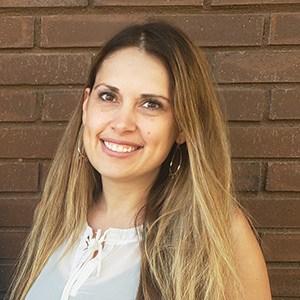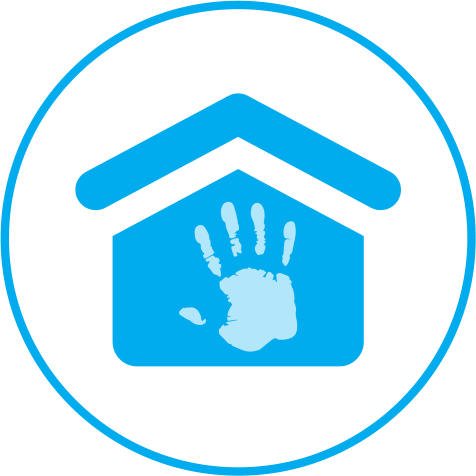How to Prepare a Child with Autism for a New Sister or Brother
The arrival of a new baby is a joyful occasion for any family. Mom and Dad are bringing a new person into the world, and their kids are getting a new sibling.
The arrival of a new child also brings anxiety and maybe even some fear. How will family life change? How will the household be affected? What will be the demands of the new child? There is uncertainty.
The stress may be particularly acute for a child with autism spectrum disorder (ASD). What’s the best way to prepare a child with autism for the arrival of a new sibling? There is no one-size-fits-all approach because every child with autism is different. But there are some steps caregivers can take to prepare the child for change.
Before thinking about how to prepare your child with ASD, it helps to remember what his or her deficits or challenges are so you can plan to address those issues specifically. If you need help identifying your child’s problem areas and coming up with interventions to address these concerns, it’s best to consult a board-certified or licensed professional who follows evidence-based practices, including the science of applied behavior analysis (ABA). Then, you’re ready to prepare with these tips:
- If the child is particularly sensitive to changes in the home environment, check in with your ABA team to discuss changes you should start making before the new sibling arrives. For example, a plan might be put in place to introduce a bassinette and crib into the home, and potentially move the bassinette around so the child begins to adjust to the new furnishings and a constantly changing environment. It is never too early to introduce visuals that involve all things baby to your child so they can become familiarized with what babies look like and all the baby items that will soon be in their home.
- Some children may respond well to introducing a baby doll into the environment and treating the doll as you might a child — holding it, feeding it, pretending to change its diapers, and certainly have it sleep in the bassinette and the crib. This not only might give them a small glimpse of what to expect, but it can also increase pretend play and social skills.
- If the child has stronger verbal skills, explain what’s coming and how you feel, so he or she begins to understand that this is a positive development. You can read stories to the child about new babies coming home from the hospital. There are some good children’s books out there, and an ABA team can create specific social stories with visuals that are personalized to the child and the family’s unique situation.
- If the child is highly dependent on a particular caregiver such as Mom, consider having helping hands (e.g. friends, family, babysitters) develop a strong relationship and rapport with the child before the new baby arrives. This may allow the child to get more comfortable being in another person’s care, which could also increase their flexibility to new people or situations, as well as not require the primary caregivers’ full attention at all times.
- If the child is sensitive to noise, consult with a professional about how to effectively address this concern. Environments with babies can often have noises that a sensitive child may not be accustomed to. It would be ideal for the child to be more comfortable, relaxed and familiar with the sound of baby cries before baby comes. At the very least, it would be beneficial for them to have support systems in place to allow them to tolerate such noise – like special headphones – which should be established before the arrival of baby.
- Many children with ASD are highly sensitive to even the slightest changes in common daily routines. Taking a different route home from school or switching the order of an activity in a way that the child is not used to can possibly trigger an unwanted behavioral episode. This can be a challenging obstacle when a new baby is added to the environment, as babies are often unpredictable with their many needs. If this is concern in any household, it is important to receive professional support to ensure that a plan is put in place to gradually increase the child’s ability to adapt to unexpected or sudden changes in common routines. The goal would be to ensure the child is more flexible and adaptable to varied routines prior to baby’s arrival.
- Children who display aggression or other unsafe behaviors should have this concern addressed sooner rather than later. This is critical and will help minimize risk of injury. An effective behavior intervention plan that is tailored to the individual can make all the difference in the world. When seeking professional help, it is important that a Board-Certified Behavior Analyst (BCBA) is there to collaborate and create the behavior plan.
Remember that every child with autism is different, and each will react differently to a new sibling. At one extreme, some children will be affected by every change in the home, be it environmental or sensory. On the other extreme, some children may seem unaware and even oblivious to the new child, especially at first.
If you think you need help preparing your child with autism for a new sibling or would like more information about ABA-based therapy and how it might help, learn more about in-home ABA services or schedule a complimentary 30-minute phone or in-person consultation.
About the Author
April MacPherson is a Board-Certified Behavior Analyst (BCBA) who has provided applied behavior analysis (ABA)-based treatment to children and young adults with developmental disabilities since 2007. She currently serves as the Director of Clinical Services for California Psychcare’s Palmdale center. April spends her time supervising and mentoring her team of BCBA colleagues and staff who are looking to grow in the field of applied behavior analysis, as well supporting families in need in and around the entire Antelope Valley area.
April spent several years teaching kids how to ride horses and develop skills necessary for teamwork and equine-care before making the jump into the field of applied behavior analysis that primarily serves the ASD population.
Outside of work April enjoys spending quality family time with her husband and 2 kids in their home, which also includes 2 horses, 2 cats, and 2 dogs. Her family also loves to take hikes together whenever possible. April hopes to return to competing on equestrian drill teams and attending rock concerts again when her boys are a bit older and she has more time on her hands.
Director of Clinical Services
California Psychcare
Applied Behavior Analysis, or ABA, refers to a variety of treatment options that are based on the principles of behavior analysis. ABA uses scientifically-based techniques for understanding and changing behavior, and is the most widely accepted approach to assess and intervene with individuals with autism spectrum disorder (ASD) or other developmental challenges or delays. This type of therapy is conducted one-on-one, is customized for each person, and is appropriate for individuals of all ages.



